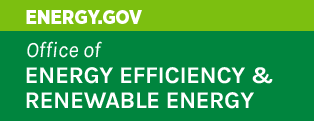Rural Landowners and Wind Farm Development Part I
April 4, 2018
Audio with Jan Kochis, a Colorado crop and livestock farmer and chair of the Rocky Mountain Farmers Union. MP3 2.5 MB. Download Windows Media Player. Time: 00:02:46.
When it comes to wind farms, developers need much interaction with rural landowners. Those landowners often have little knowledge of the process, along with many questions. The National Renewable Energy Laboratory is helping to bridge the knowledge gap for rural Americans.
Jan Kochis, a Colorado crop and livestock farmer, is chair of the Rocky Mountain Farmers Union. Her farm includes turbines and a transmission line in Elbert County, Colorado, where Xcel Energy-Colorado is building and will own and operate a 600-megawatt wind facility. The wind farm will power electricity to about 325,000 homes once fully operational.
Kochis says many in the community were excited for the opportunity.
"We have always supported renewable energy and even before this wind farm was started we had been contacted by some different groups. We were sort of excited to think that they were considering it, especially since we know in the area that we live that we have plenty of wind. There were some people that weren’t really interested and those are the people that didn’t sign a wind development lease, and that certainly is their choice."
Wind farm operators lease the land they place winds turbines on. The process starts with a development lease when the operator is planning and constructing the facility. Then the leases are created for individual turbines. Kochis explains.
"We had an attorney help us and he said, you know, if they are going to do it, they lease every acre whether they are going to use it or not. And, the wind development lease was a per-acre payment. That wind development lease was actually 10 years. Then we signed a different lease once they decided to go with the wind farm. And their payments are royalties for about 20 years and then it can be renewed or there is wording in the contract that if they decide to decommission it that they remove it and then everything goes away."
That differs from the transmission line leases for her farm, which energy providers purchase an easement, which is a one-time payment. The wind farm payments occur annually.
The construction of wind farms can be a bit disruptive, she says. But it does not affect the farming operations moving forward.
"At first, it is pretty disruptive because there’s a lot of extra traffic and they’re building roads as they are constructing the turbines. But they compensate you for that, and it really doesn’t affect your farming operation moving forward because you can farm right up to the base of the turbines and livestock can graze under them. And in some ways, they build some roads into some of our fields that we’ll be able to use that will actually be beneficial to the farm operation."
